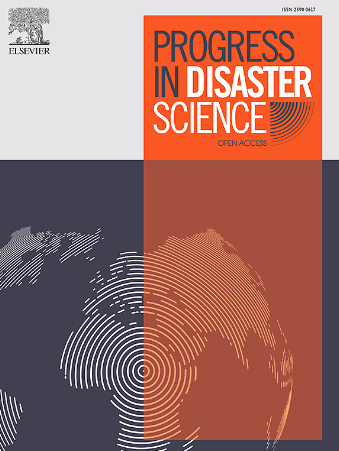Improving operational use of post-disaster damage assessment for Urban Search and Rescue by integrated graph-based multimodal remote sensing data analysis
IF 3.8
Q3 ENVIRONMENTAL SCIENCES
引用次数: 0
Abstract
This work investigates the application of remote sensing technologies within the specific operational context of emergency urban search and rescue (USAR) efforts post-disaster. We thoroughly investigate two innovative methodologies, each tailored to meet distinct operational goals in a USAR setting. The first employs a belief propagation framework that is designed to provide prompt and robust initial damage assessments using sparse data, with the capability to incorporate additional on-site information as it becomes available. The second methodology introduces a modified graph convolutional network to quantify the uncertainty levels inherent in damage classification tasks. Three case studies were considered, using damage assessment data from the 2020 Beirut explosion, the 2021 Haiti earthquake and the 2023 Türkiye-Syria earthquake. Our experimental results demonstrate the potential of these approaches to achieve operational objectives, particularly in terms of robustness and scalability in disaster scenarios. The versatility offered by graph-based methodologies establishes a solid foundation for addressing these dynamic challenges, suggesting a promising direction for continued research in this field.
通过基于综合图形的多模态遥感数据分析改进城市搜索与救援的灾后损害评估的业务使用
这项工作调查了遥感技术在灾后紧急城市搜索和救援(USAR)工作的具体业务背景下的应用。我们深入研究了两种创新方法,每种方法都是为了满足USAR环境中不同的操作目标而量身定制的。第一种方法采用了一种信念传播框架,该框架旨在使用稀疏数据提供迅速和可靠的初始损害评估,并具有在可用时合并其他现场信息的能力。第二种方法引入了改进的图卷积网络来量化损伤分类任务中固有的不确定性水平。考虑了三个案例研究,使用了2020年贝鲁特爆炸、2021年海地地震和2023年 rkiye-叙利亚地震的损害评估数据。我们的实验结果证明了这些方法在实现操作目标方面的潜力,特别是在灾难场景中的鲁棒性和可扩展性方面。基于图的方法提供的多功能性为解决这些动态挑战奠定了坚实的基础,为该领域的继续研究提供了一个有希望的方向。
本文章由计算机程序翻译,如有差异,请以英文原文为准。
求助全文
约1分钟内获得全文
求助全文
来源期刊

Progress in Disaster Science
Social Sciences-Safety Research
CiteScore
14.60
自引率
3.20%
发文量
51
审稿时长
12 weeks
期刊介绍:
Progress in Disaster Science is a Gold Open Access journal focusing on integrating research and policy in disaster research, and publishes original research papers and invited viewpoint articles on disaster risk reduction; response; emergency management and recovery.
A key part of the Journal's Publication output will see key experts invited to assess and comment on the current trends in disaster research, as well as highlight key papers.
 求助内容:
求助内容: 应助结果提醒方式:
应助结果提醒方式:


